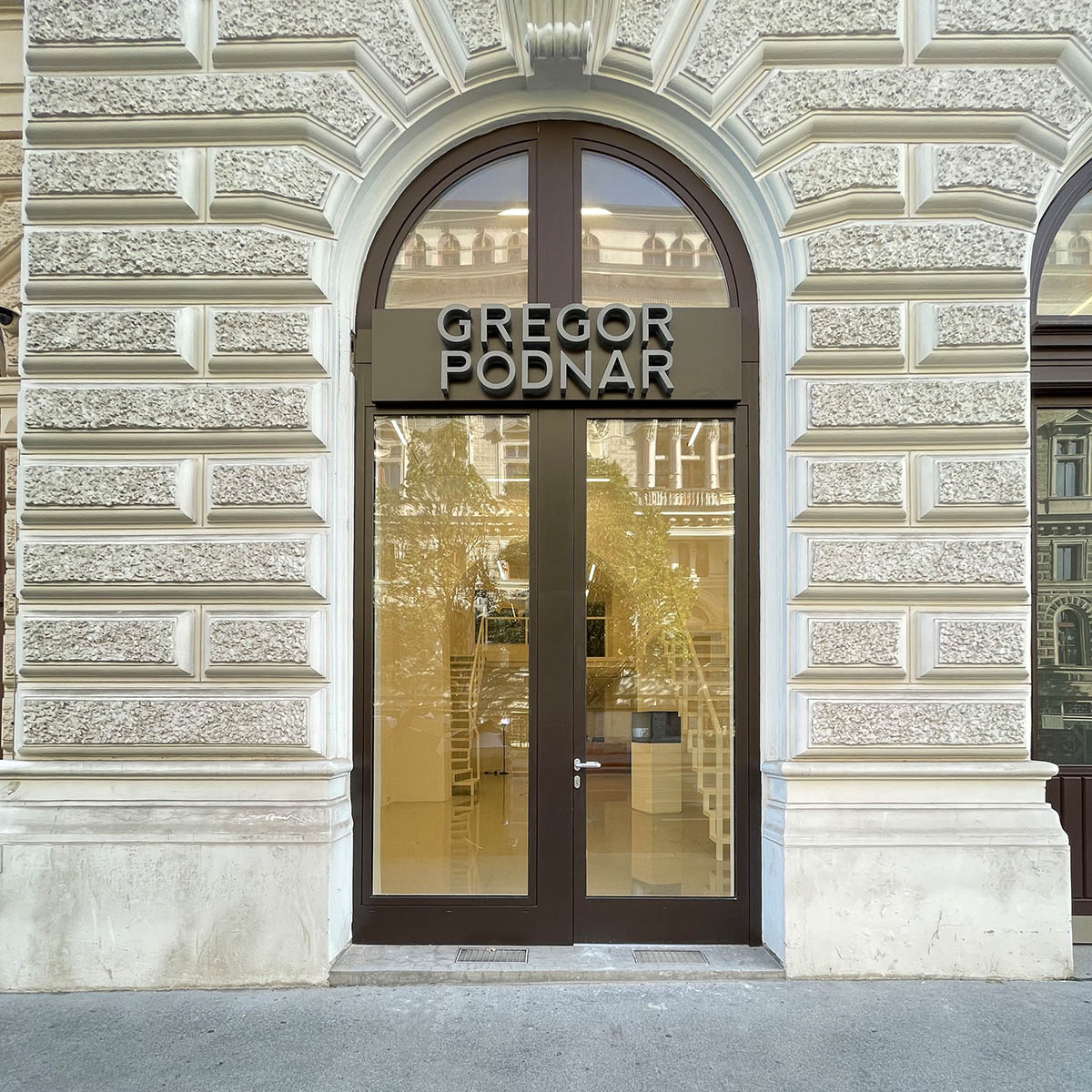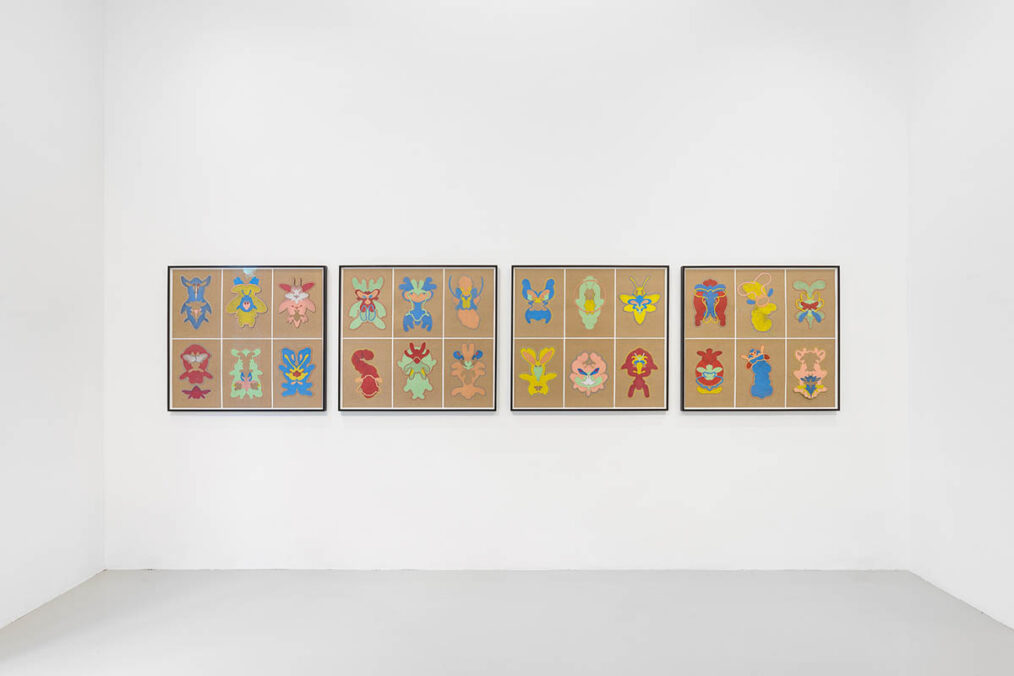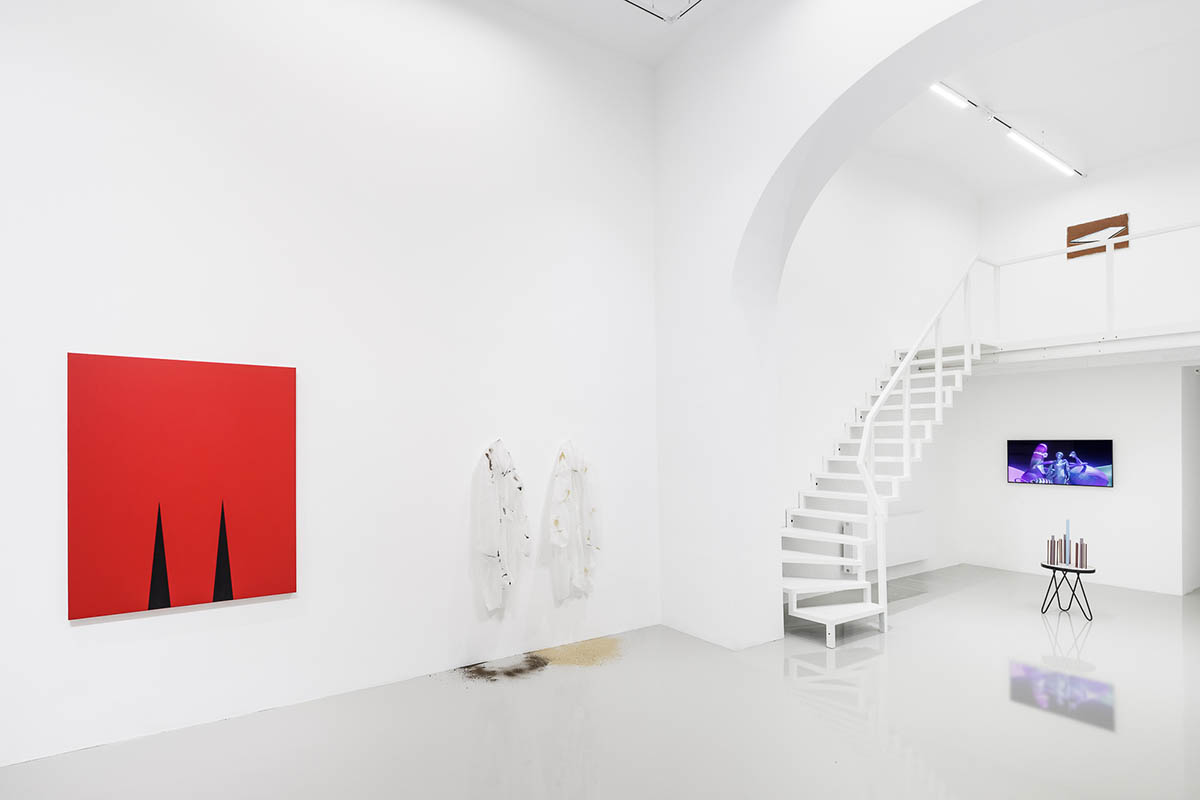
Erka Shalari: You’re widely recognized as a gallery owner. Yet, research brought me across some very interesting articles that analyse your curatorial work – you have been curating numerous exceptional exhibitions both in Slovenia and internationally. Therefore, I would like to talk with you about memories of that time. How were the audiences for example?
Gregor Podnar: I will start with the participatory practices of the ’90s, in which I have been for sure quite active at the beginning of my curatorial experiences. It was the like second half of the 90s, mid-90s, when I started and it was quite exciting you know, because it was quite of new trust, it came out I would say of a certain Zeitgeist, it was something I could relate to, but it was something more, which we would realize then afterward; when I have been to the UK and I saw that the development or reflection on participatory practices there came five years later. This is what makes this time historical in my point of view, but before, it felt natural to do what stirred my interest.

Could the development of participatory initiatives in the 90s be attributed to collective discontent stemming from a lack of participation in politics during the SFRY era?
I am not sure if the Slovene cultural scene was so disconnected. If you see Yugoslavia of the 60s, for instance, Zagreb was one of the cities of avant-garde art. A city of festivals, also for Western European countries, where artists from Switzerland could meet their peers from Italy or Germany for instance, and they participated in annual events named New Tendencies (Nove tendencije). Of course, it was a particular socialist system, and it was also a confederation with republics of its own, which had various political and cultural, sometimes stronger developed in the sense of an open society, sometimes less; so this also made the wonder of Yugoslavia. During my curatorial work, I have been increasingly interested in works with stronger poetic impact, which also brought me to the idea of opening up a gallery. They were artists with whom I worked, and I was thinking that they should deserve, we should deserve, to have a closer relationship. As a curator, you collaborate with an artist once, and often that is it. At that time, I was quite busy, working, going from one exhibition to another, we had twelve to fourteen shows per year. It was crazy. Plus, I was internationally involved, so I was always on the run. Then to a specific point, you come to physical boundaries.
Then, I realized that I had a specific attraction to some artistic positions, which partly were embodied in a show called Modesty, which I was at that time curating with Lívia Paldí at Škuc Gallery and Moderna galerija in Ljubljana.


I also have an image in my head from the research – it is the year 1998, and you are part of a performance by artist Janja Žvegelj, you play squash together, the artist and the gallerist. Can you imagine yourself playing such a direct, active role in front of the audience today, like in that game?
I had to confess that when we started the gallery, I was much more involved in the process of production because I liked it a lot, and I think that I am quite strong in this part, but then, of course, if you go from fair to fair the focus of preoccupation shifts. The focus on the production is something that I kind of miss. I am not so eager to be in this sense so deeply involved, but if it is requested, or if we find a way or I think is needed, it is not a hurdle for me at all. I see myself more like an editor of a book, and someone has to write it. I was convinced that quality is the main part of our job, which of course, is not true at all, it is just one part of the whole. It is strategy, is how to build up your network, and is also not only the quality of the work but the way the artists are connected to it.
Coming back to your question, yes I wish the pressure of the market would be less present in recent times so that the part of production could be stronger on the side of the gallery.

What strikes me about your work is that you can challenge the audience—just thinking about all the times you have premiered an artist in a particular city. It is not that they were not known in international terms, but until this moment, they had not exhibited in this particular place. To artist Dan Perjovschi, you dedicated the first exhibition in Berlin, or even earlier, it was you who did the first major exhibition of artist Nika Špan in Slovenia, her home country. How does it feel to present a specific position to an audience for the first time?
You know, now I am more aware of this issue, to think about the audience when I am deciding about a show, or what and whom to show. I can tell because in Berlin we have worked mainly for the audience outside the city, towards the art fairs and international contacts. Which was not ideal of course, if you work within a physical space, and it was also partially our fault that we did not put more effort into the local scene. And here, I feel that we have to consider the Viennese audience. It is more present, it is more demanding, maybe because of the smaller size of the city/scene. Particularly what I realised is: “It matters what you show”. Still, I am not speaking about the commercial aspect, because this is something that should follow. The interesting thing here in Vienna is that I see that people are critical, and kind of curious. I can speak just for my case, and I can imagine it is not easy for everybody here because it is, of course, a city of „who knows whom“ and is a kind of a wall by itself, but I see that there is space for our program here. For instance, at the beginning, we did conceive two group shows because I thought that it was good to give a first insight and also direct towards the future. The first exhibition that we opened in October 2022 was called “New Entry. Vienna” and we showed a selection of works by artists of the gallery. The second group exhibition “Dictionary of Imaginary Places” displayed works by artists I have been interested in on different levels. After this exhibition, we continued to collaborate with Berlin-based artist Helen Verhoeven and with Marieta Chirulescu.

Regarding my question before, somehow, I feel that I have to justify my thinking; when I was posing this question to you, maybe I was using today’s rhetoric that gallerists think more strategically about who they show. Maybe that time, it was more of obeying intuition?
I came from curating and at that time, I was more blue-eyed. I was stubborn, and a bit also inexperienced. As a curator, you just have other premises, you know? You are involved in other issues, and also I was opening something up in the field first of all. I grew up in Cologne, which was one of the peeks of the art market, let’s say in the European context, but then I realised that I was not so part of it. That time I was living in Ljubljana, it was much more focused on the curatorial way and the non-profit structures. Galleries involved in art on an international level were absent in Ljubljana. Then I took this step, a step for which I had to pay my price, so to speak. Partly, it was due to its reputation because my program started to be recognized internationally. And the price, of course, is that what is truly appreciated is not always well-selling. It is my luggage that I started from a curatorial perspective, so to speak.
Before we talked about the first group shows you did in Vienna, how did you unite all these artists, works, and practices?
For each of them, there are two or more reasons why I invited them. So, first of all, for sure, we were focused on things that came from my curatorial practices of the 90s. At the starting point we were not considering that much particular mediums, let’s say paintings, and not that I was really kind of opposing this medium, not at all, but I started from a point where painting was not the prima ordinary medium. I was also surrounded by positions and paintings, which I thought I was not so familiar with. Even if we were talking about participatory practices, you could imagine that has to do with the legacy of conceptual art practices of the 70s and 60s, and there it was for sure a kind of nihilistic issue of the painterly process in a way, so this partly I have taken but not like orthodoxy.
Almost all of the artists I was working with in the past produced their works in various media. Then at a certain point, some ten years ago, I included two artists who were mainly working within one medium only, one of them mainly photographing and one who was mainly painting. And now, I thought it is good to focus further on how to find interesting painting positions, so this is not a ‚research of yesterday‘.


I am curious about how you find Vienna. When scouting locations for the gallery, did you have a clear vision of the desired architecture, or did this evolve throughout the process?
The city itself is kind of easy to grasp, I mean easy in the sense you have a center, and it is not so multilayered. It is quite a big city, but half of the city is anyhow part of the other side of the Danube, which I also find interesting to discover. It is very pedestrian. Before arriving here, I was also checking out a bit. I had for example a pop-up at Charim Gallery. Miryam Charim was so generous to give me for a few weeks her place in Schlefmühlgasse, so I also had the experience of this space, which was very helpful, and then it was this one which I saw on the internet in October 2021. This space was used before as storage, and I felt that this could work out. Nevertheless, I was also investigating some other places, but this felt like the right one. Before, some locals were saying that the area is a dead part, particularly regarding the street, but what is closer to the Museum of Contemporary Art??
Then, I realised that Eschenbachgasse is just 700 meters from here, and then there is Eva Presshuber, 400 meters from the other side. On the other side of the Museum Quartier is Galerie Hubert Winter. I can say that I am really really happy with the location, and maybe also with the fact that the space is not too big. In Berlin, I had quite a huge space, more than double the size of the gallery, but it was not so perfectly located and there we moved in just before the pandemic time. When we speak about the architecture that existed before, I feel that the space is not easy, but it is a nice kind of challenge.
At the same time, it is also something that is not really related to other galleries here in Vienna or kind of touching other kinds of architecture of, let’s say, Berlin, Milan. I feel very good about it.

Even though you have always had long-term relationships with cities, you have relocated your gallery a few times – Kranj, Ljubljana, Berlin, and now Vienna. What are the big learnings from this path?
Conceptually, I do not have any problems with moving. In my mind, I am not related to a city or spot, but I have to say of course, when you get older, every move brings something different, because you have a different luggage with you. For instance, in this case, when I moved here to Vienna, I realised how important a gallery team is. All the knowledge that was embedded in what my team was doing, was embedded in Berlin, and now we have to do this thing here again! These need some extra energy to find the people who believe in that, who know, and so on, and of course, all this needs energy. Not only the part that you start again but also the infrastructure, the fact that every move is also financially expensive. The longer you are somewhere, the more belongings you have. I had more than 10.000 items, and I needed six tracks to move the whole. I was exhausted, but then I was happy to know that this city has an appreciation, that the program is well received, and that people are curious.
Thank you for the interview Gregor!
Currently on view: Anne Neukamp – Hand, Paper, Mirror
Address and contact:
Gregor Podnar Gallery
Volksgartenstraße 3, 1010 Vienna
www.gregorpodnar.com
Erka Shalari is a Vienna-based art writer. Her work is committed to uncovering distinctive artistic positions in contemporary art. The work methodology is strongly influenced by psychology, epistemological works, as well as affects and rituals. She is an International Editor at Les Nouveaux Riches Magazine.





